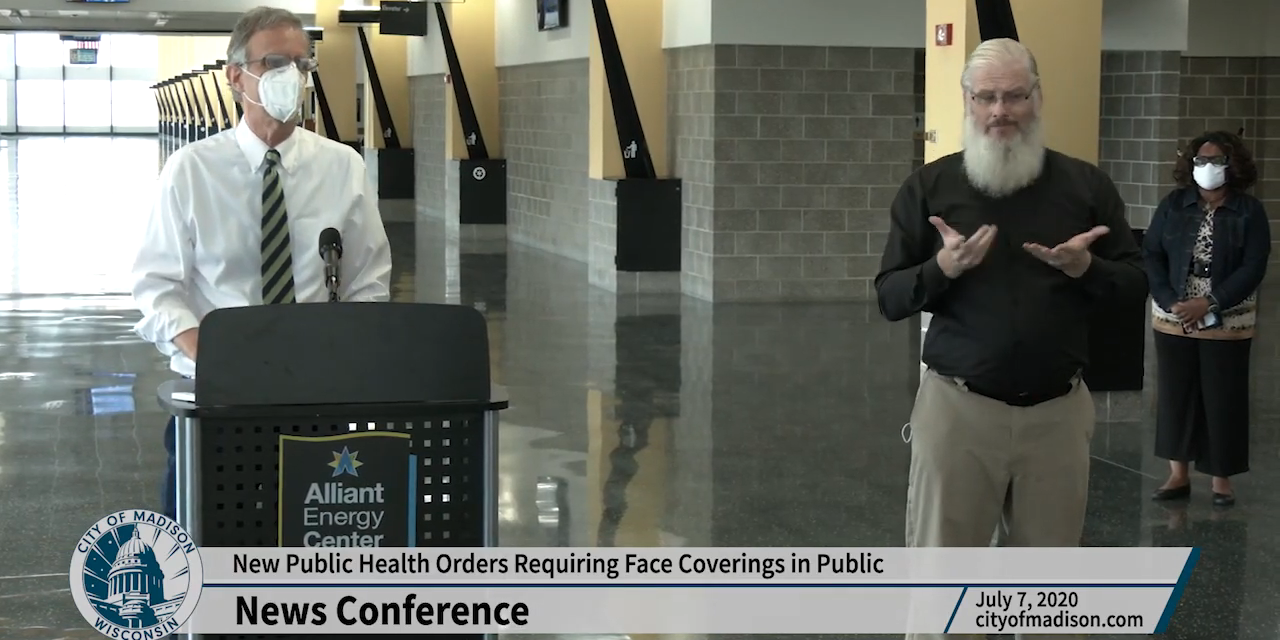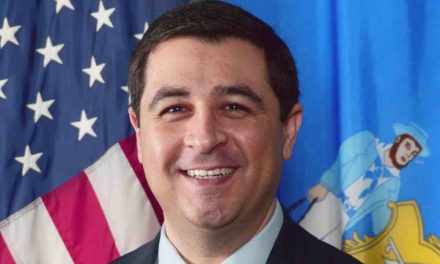
Dane County Executive Joe Parisi talks mask requirement, COVID-19 response

Starting Monday, Dane County will require people to wear masks when indoors, except at home, as part of an effort to curb the spread of COVID-19.
Dane is the only county requiring face coverings so far. The county had 2,785 confirmed cases of the disease as of Friday morning.
County Executive Joe Parisi talked with Wisconsin Health News about the policy, the county’s response to the pandemic and what else it needs to fight the virus. Edited excerpts from the interview are below.
WHN: What led to the order? Why is the county pursuing that now?
JP: The county has been very aggressive in dealing with the virus since it first appeared on the map. We were the first county in the state and the 12th in the nation to have a positive test. And we had local guidelines even before the state guidelines took effect. We’ve taken this virus very seriously and we have paid very strong attention to the science and (the Centers for Disease Control and Prevention) guidelines and information as it’s evolved.
What we’ve seen is that information, certainly around face masks, has evolved quite a bit. At the beginning of the pandemic, there was question among the public health community about whether face masks even helped. What we know now is that they are one of the most effective measures we can take to reduce the spread of the virus.
So what we have seen in Dane County in particular since we went to what we refer to as phase two in our reopening, which was allowing occupancy of 50 percent in bars and restaurants, is a huge spike in cases. And so what we did is we went back to more stricter guidelines in general, particularly around capacity in bars.
We’ve decided that it was imperative that we take further steps and that masking would be the most effective next step we could take and also a step that’s frankly not very restrictive because we’re always trying to balance the impact that this virus has on public health as well as the economy. So a mask also allows people to continue to socially distance but go about their business in a more normal manner than even tighter restrictions in other areas.
WHN: How are you ensuring that the requirement isn’t going to be an undue burden and that people have access to masks?
JP: We’ve put a lot of work up front into building an infrastructure and reaching out to community-based organizations and folks throughout the community to talk about the logistics of a masking policy and the need for it. So we’re doing a few things. We’re contracting with a number of organizations, mostly in communities of color who deal with healthcare issues in communities of color to do outreach and education around masking and around the requirement. And to complement that, the county is going to be providing tens of thousands of masks through churches, community-based organizations, community centers to make sure people not only are aware of the requirement and why we’re doing it, but if they don’t have access to or can’t afford a mask, that they will be able to be provided with one through our network.
WHN: How are you looking to enforce the policy?
JP: We’re not going to be heavy handed about the enforcement piece of it because we fully expect that the vast majority of people will comply because it is a guideline, it is a health order and it is to protect people, their neighbors and their families. I kind of liken it to stop signs. Most of the time you come to an intersection, there’s not a police car sitting there, waiting to make sure you’re going to stop. But you stop because you know it’s the best thing for your safety and the safety of others. And so we fully expect that there will be major compliance with this. As with any ordinance or guideline, there will always be people who refuse to comply. We hope that will be few. And that’s why we’re doing the education that we are and really appealing to a sense of community spirit and of helping out your neighbors.
In Dane County, we have a long history of doing that. When we look at natural disasters that have occurred, flooding, fires, when we look at things like the explosion that happened in Sun Prairie a few years ago and when there’s an illness in the neighborhood, people in this community come together and step up for their neighbors. And our message is that now stepping up for your neighbor means wearing your mask. We expect we will get very good compliance with it, particularly the more people learn about how impactful it is in reducing the spread of the virus.
WHN: The spike in cases in Dane County seems to be among young people and there doesn’t seem to be as much strain on the health systems in the area. Do you have concerns about the capacity?
JP: The capacity of the health systems is always a concern. We’ve really just seen this surge now for less than a couple of weeks. Oftentimes, there’s a lag time between when the cases start showing up and when people start presenting at the hospital. So we’re keeping a close eye on that. And while a large number of these cases and a much larger percentage have been coming from younger people, there still are a large number of cases among people in higher-risk categories also. We’re very concerned. We still have the capacity to stand up a field hospital if necessary, but we really want to avoid that. We want to avoid illness and suffering and death.
And the one other piece that we have to look at in Dane County is that our medical system here is more of a regional system. For example, UW Hospital feeds in from an entire region, other counties and even other states. So things are a little more challenging for us. Our destiny isn’t completely under our control when it comes to hospital capacity. We certainly can impact it greatly and that’s why we are taking the measures we are. We would love it if the surrounding counties would look at a masking requirement too. We’re hoping that since we’ve been first to do this others will take a serious look at it.
WHN: Dane County has undertaken a few initiatives to respond to the pandemic, including offering support to those facing evictions. What’s been the response?
JP: The balancing act that we have is that this is a public health crisis, but it’s also an economic crisis for people who have lost their jobs. So we have a number of programs. Eviction prevention is one. We’ve put $10 million into a fund that is being administered by some community-based organizations. There’s a very robust response to that funding. A lot of people are hurting. So we want to do everything we can to get money into pockets of people so that they can stay in their homes rather than become homeless.
We’ve tried to be very comprehensive in looking at the needs of people who are in the most vulnerable situations. We’ve also to date put $6 million toward an initiative to help bring increased funding to Second Harvest Foodbank and our network of food pantries throughout the county due to the stark increase in demand for food because of same reason that there’s an increase in demand and need for assistance. So we have $6 million invested right now into providing additional food. We’ve done that in partnership with local farmers and growers so that we can help our farmers and growers at the same time because a lot of them have lost business because of supply chain disruptions et cetera. And then we have a small business grant program that we’ve put in place as well as an assistance program for child care centers who are hurting from the pandemic. So we’ve tried to focus any resources we have available on both the illness prevention and trying to help people through their tremendous economic challenges.
WHN: What does the county need in terms of assistance from the state or federal government?
JP: We could really use another round of (Coronavirus Aid, Relief, and Economic Security) Act funding from the federal government. That’s what we’ve been using for most of our response right now. But we will run out of that money at a certain point. So federal and state assistance is critical to our being able to have the resources to continue to take care of people the best we can. Right now, county government, just like many other businesses, is taking a huge financial hit. A lot of our revenue comes from sales tax. We’ll probably be down anywhere from $20 to $25 million in sales tax revenue just in 2020. That’s before we even look at our 2021 budget. So we’re doing the best we can to survive because we have to provide the safety net for our community. But we could really use some additional help from the federal government. We’re grateful for what they’ve been able to do and we hope that they can do more.





